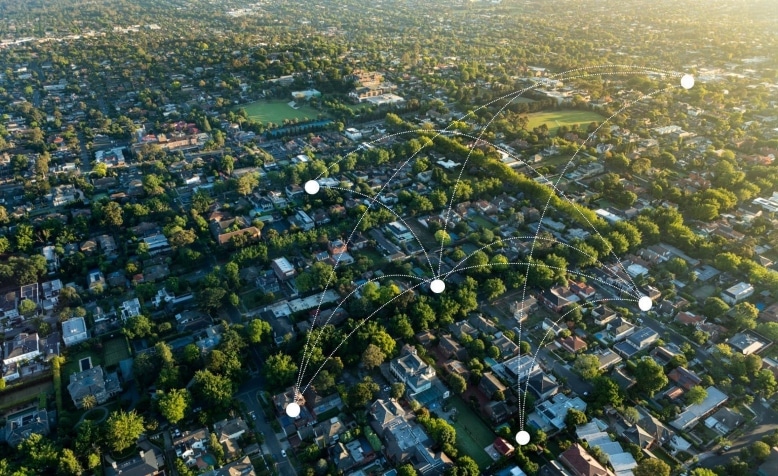Broadband Office Name: Department of Housing and Community Development (DHCD)
BEAD Award Amount: $1.48 B
Virginia Broadband Director: Tamarah Holmes
Virginia BEAD Program Tracker
| State | IP Vol 1 Approval | IP Vol 2 Approval | Challenge Process Submission Closed | Submitted Challenge Results to NTIA | Challenge Process Results Approved by NTIA | 1-Year Subgrantee Selection Process |
|---|---|---|---|---|---|---|
| Virginia | Yes | No | Yes | No | N/A | N/A |
Virginia BEAD Program Information

Key Updates
Virginia has received approval for their Initial Proposal Volume 1 and is currently awaiting NTIA approval for their Initial Proposal Volume 2.
The state has closed its State BEAD Challenge Submission portal. The Challenge Process will determine the locations eligible for BEAD funding.
For more information, please visit Virginia BEAD Program.
Virginia BEAD Program Plans & Maps
Virginia BEAD Program Initial Proposal Volume 2: Overview
*Information is subject to change. Virginia is awaiting official approval of Initial Proposal Volume 2 from the NTIA.
BEAD Long-Term Objectives
Goal 1: Universal Broadband Access
- Invest BEAD funding to achieve functionally universal broadband access by the end of 2024 for all unserved and underserved locations in the Commonwealth that lack a funded solution for broadband access.
Goal 2: Complete Construction
- Complete the construction of BEAD-funded projects by 2027 and 2028.
Goal 3: Increase ACP Utilization
- To the extent funding is available, promote federal resources for broadband affordability by increasing Affordable Connectivity Program (ACP) utilization by more than 5% through existing and future efforts.
Goal 4: Full Broadband Adoption
- To the extent funding is available, conduct statewide needs assessments and develop programs to achieve full broadband adoption.
Virginia BEAD Program Project Area Design
In Virginia, project areas for the BEAD program are being designed using ZIP Code Tabulation Areas (ZCTAs). The following approach is being utilized:
- ZIP Code Tabulation Areas (ZCTAs):
- Project areas are initially defined by ZCTAs.
- Division by County and City Boundaries:
- If a ZCTA spans multiple counties or cities, it will be divided into multiple application areas based on those county and city boundaries.
- Coverage Requirements:
- Applicants must propose to serve at least 95% of unserved and underserved locations within each application area.
- Applicants must also include unserved community anchor institutions in their proposals.
Virginia BEAD Program Extremely High Cost Threshold
After receiving applications, Virginia will determine the Extremely High Cost Per Location (EHC) for areas that did not receive any bids. This process involves the following steps:
- Application Review:
- Review all submitted applications to identify areas that did not receive any bids (no-bid areas).
- Cost Analysis:
- Conduct a cost analysis to determine the EHC for these no-bid areas, ensuring that the cost threshold is realistic and reflects the financial challenges of deploying broadband in these locations.
- Resource Allocation:
- Allocate resources efficiently to address these high-cost areas, potentially adjusting strategies to attract bids or finding alternative solutions to ensure broadband coverage.
BEAD Deployment Subgrantee Selection
Virginia is asking for the following preregistration evidence from subgrantees and compliance with: Financial capability, managerial capability, operational capability, technical capability, ownership info, public funding info, compliance with laws, cybersecurity/supply chain compliance, and BABA/EHP/NEPA/NHPA compliance.
Primary Scoring Criteria for Priority Broadband Projects
- 45% – Minimal BEAD Outlay
- 20% – Affordability
- 10% – Fair Labor Practices
Secondary Scoring Criteria
- 5% – Speed to Deployment
- 20% – Local and Tribal Coordination
Additional Secondary Scoring Criteria for Other Last-Mile Projects
- 2.5% – Speed of Network and Technical Capabilities
- 2.5% – Speed to Deployment
BEAD Non-Deployment Subgrantee Selection
Sub-Awarding Digital Equity Act Planning Grant Funds:
- Community Action Agencies (CAAs):
- The Office of Broadband is sub-awarding funds to CAAs in nine regions across the Commonwealth.
- These funds are for developing regional digital opportunity plans that will inform the overall Virginia plan.
- Organizations Engaged in Digital Opportunity Work:
- Funds are also being sub-awarded to organizations currently involved in digital opportunity initiatives.
- These organizations will write case studies on digital opportunity-related pilot projects for inclusion in the Commonwealth plan.
Utilizing BEAD Planning Funds:
- Localities and Tribal Governments:
- BEAD planning funds are being used to give localities and tribal governments in Virginia the opportunity to conduct broadband affordability and adoption planning processes.
Consideration of Non-Deployment Activities:
- The Office of Broadband will consider non-deployment activities in line with the BEAD Notice of Funding Opportunity (NOFO) to enhance digital equity and broadband adoption.
BEAD Eligible Entity Implementation
The Office of Broadband does not currently plan to undertake any initiatives without making a subgrant. All planned activities and initiatives will be executed through subgrants to ensure effective collaboration and utilization of resources across various stakeholders and organizations.
BEAD Local, Tribe, and Regional Broadband Planning Process
The Commonwealth Connect Coalition, over the past five years, has developed a robust group of stakeholders dedicated to supporting universal access to broadband and associated broadband deployment programs.
Listening Sessions and Stakeholder Input:
- In May, the Office hosted three listening sessions to gather input from stakeholders for the development of the Five-Year Plan and Initial Proposal.
- One session was specifically held for local governments, broadband providers, industry representatives, local organizations, non-profits, and community organizations.
Tribal Consultation:
- Hosted Tribal governments for a formal tribal consultation in Richmond, VA, to ensure their input and concerns are addressed in the broadband planning process.
Collaboration with Community Action Agencies (CAAs):
- The Office is working with Community Action Agencies to develop regional plans addressing the digital divide.
- Identified lead CAAs for nine regions to conduct grassroots engagement, including facilitating community input sessions and focus groups.
- Distributed the Virginia Digital Opportunity Survey to gather data and insights from residents.
BEAD Labor Standards & Protection
Virginia requires all BEAD subgrantees to submit the following information:
A record of past compliance with federal/employment laws:
- Must address info on deployment projects within the last 3 years.
- Certification form from an Officer/Director level employee of past compliance.
- Written confirmation that subgrantee has disclosed any violations from contractors within the last 3 years.
- Discussion of workforce plan
Plans for ensuring compliance with federal/employment laws:
- How subgrantee will ensure compliance in its labor/employment practices.
- Info on applicable wage scales, wage, and overtime practices for each class of employee expected to be involved in physical construction of the network.
- How subgrantee will ensure implementation of workplace safety committees.
- Comply with the Prevailing Wages Act.
- Other items as outlined in the BEAD NOFO.
BEAD Minority Business Enterprises / Women’s Business Enterprises / Labor Surplus Area Firms Inclusion
Virginia confirms it will take the necessary affirmative steps as outlined in the BEAD NOFO to ensure the inclusion of small and minority businesses and women’s business enterprises. These steps include:
- Solicitation Lists:
- Place qualified small and minority businesses and women’s business enterprises on solicitation lists.
- Targeted Solicitation:
- Ensure that small and minority businesses and women’s business enterprises are solicited whenever they are potential sources. Virginia is already in partnership with Go-DBE for this purpose.
- Dividing Requirements:
- Divide total requirements, when economically feasible, into smaller tasks or quantities to permit maximum participation by small and minority businesses and women’s business enterprises.
- Encouraging Participation:
- Establish delivery schedules that encourage participation by small and minority businesses and women’s business enterprises where the requirement permits.
- Support Services:
- Use the services and assistance of organizations such as the Small Business Administration and the Minority Business Development Agency of the Department of Commerce, as appropriate.
- Subgrantee Requirements:
- Require subgrantees to take the affirmative steps listed above as they relate to subcontractors.
BEAD Cost & Barrier Reduction
1. Promoting the use of existing infrastructure.
2. Promoting and adapting dig-once policies.
3. Streamlining permitting processes.
4. Streamlining cost-effective access to poles, conduits, and easements.
5. Streamlining rights of way, including the imposition of reasonable access requirements.
BEAD Low-Cost Broadband Service Option
The Office of Broadband has established the following criteria for applicants offering a low-cost broadband service option:
- Cost:
- The service option must cost $30 per month or less.
- Applicants may seek a waiver from the Office of Broadband to increase the maximum cost of the service plan to $50.
- Affordable Connectivity Program (ACP) and Lifeline:
- The service must allow the end user to apply for ACP and Lifeline benefits.
- Participation in ACP is required for the applicant.
- Service Specifications:
- Provide speeds of at least 100/20 Mbps.
- Ensure latency measurements do not exceed 100 milliseconds.
- The service must not be subject to data caps, surcharges, or usage-based throttling.
- Availability:
- The low-cost broadband service option must be made available to those who qualify for the FCC’s ACP.
- The Office of Broadband strongly encourages making the low-cost broadband service option available to all eligible prospective customers across the subgrantee’s service territory.
BEAD Middle-Class Affordability
The Office of Broadband has established the following criteria for applicants offering an affordable service option:
- Cost:
- The service option must cost $50 per month or less.
- Availability:
- The affordable service option must be made available across the subgrantee’s BEAD-funded project areas.
- Subgrantees are encouraged to make the affordable service option available across their entire service territory.
- Public Awareness:
- Prospective customers must be well-informed about the affordable service option.
- Information about the plan must be publicly available and easily accessible.
